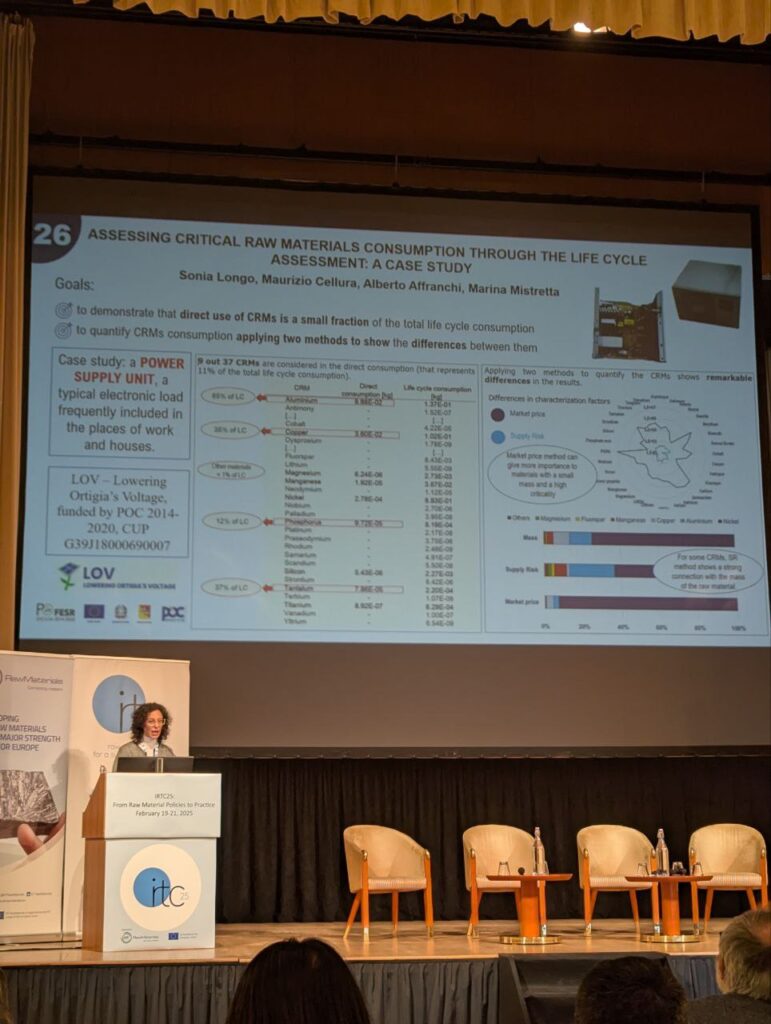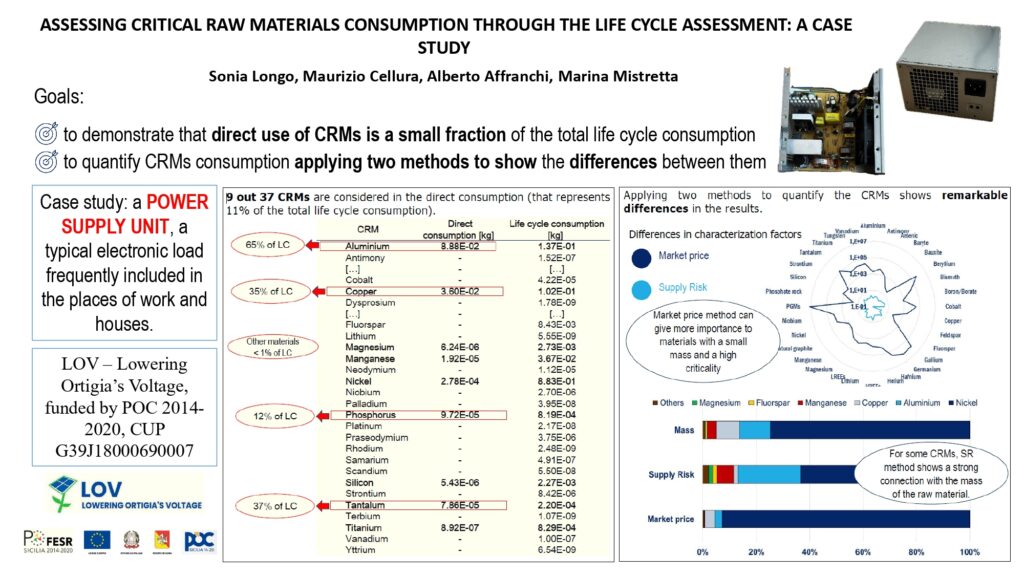Assessing critical raw materials consumption through the Life Cycle Assessment: a case study.
Critical raw materials (CRMs) are essential for the production of a wide range of products and technologies, with global demand for these materials continuously rising. For example, the demand for rare earth elements, which are crucial for high-tech applications like electric vehicles and renewable energy technologies, is projected to increase by 400% by 2040. Similarly, materials like cobalt and lithium, critical for battery production, have seen demand grow by over 200% in the past decade. In 2020 alone, the European Union imported approximately 98% of its rare earths and 86% of its cobalt from outside the region, underscoring the supply chain vulnerability and strategic importance of CRMs.
Accurate quantification of CRM consumption, including hidden uses throughout a product’s life cycle, can be achieved through the application of the Life Cycle Assessment (LCA) methodology. This paper focuses on evaluating the total CRM consumption of a power supply unit, starting from its eco-profile derived from an LCA study. To ensure the assessment is not solely dependent on the mass of each CRM, two distinct approaches are used: one based on supply risk and the other on economic value.
The results show similar percentages when the evaluation is based on CRM mass or supply risk index, with a few exceptions. However, the approach based on economic value appears more effective in highlighting materials deemed more “critical” from an economic perspective.
The research is developed within the activities of the project LOV – Lowering Ortigia’s Voltage, funded by PO FESR 2014/2020.
I risultati del progetto LOV sono stati presentati alla conferenza IRCT25, che si è tenuta a Lubiana dal 19 al 21 febbraio 2025. La Prof.ssa Sonia Longo dell’Università di Palermo ha illustrato gli obiettivi del progetto LOV ed ha descritto i risultati di uno studio riguardante la stima delle materie prime critiche incorporate in una power supply unit. L’analisi è stata sviluppata con un approccio di “life cycle thinking


